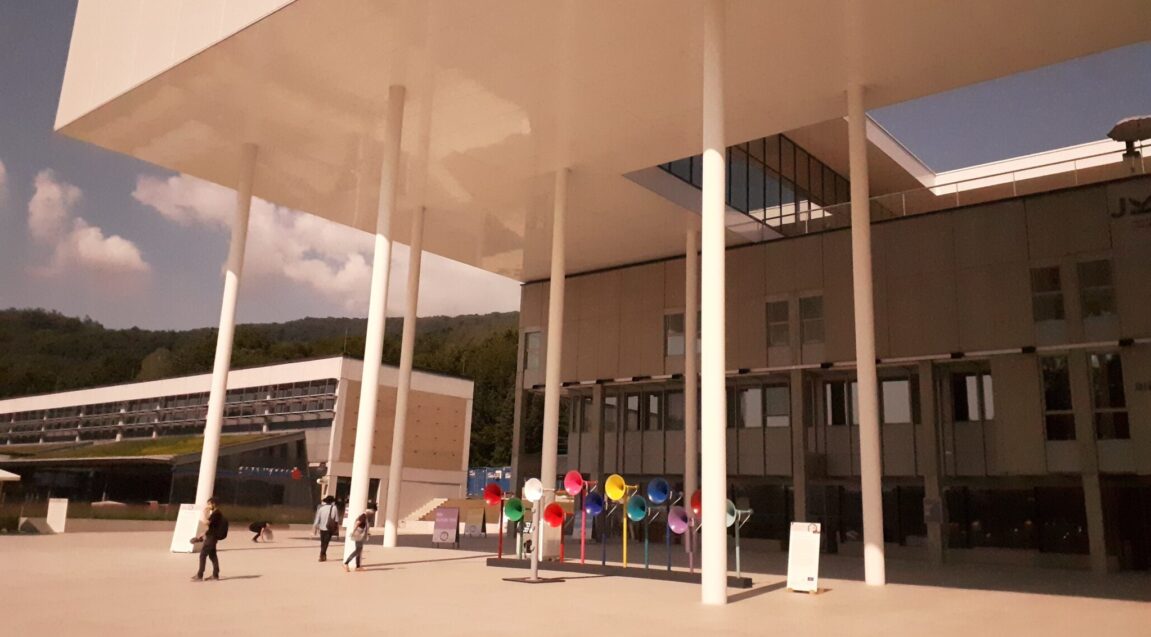In contrast with more conventional approaches to the uses of theatre for the public engagement with science and technology (e.g. pedagogical approaches to science communication), contemporary forms of participatory, community, interactive or digital theatre have also served as relevant arenas for projects searching to activate publics through agonistic and complex encounters with contemporary technoscientific issues. This was the case of Enacting Innovation, a participatory performance by Judith Igelsböck & Friedrich Kirschner together with Sarah Buser, Tomás Montes Massa, Mónica Rikić, Leoni Voegelin, and Laura Zoelzer, featured in the Ars Electronica Festival, Linz (Austria, September 2020). The performance was, in itself, the crystallisation of a dialogue between social scientists and theatre professionals working in the vicinity of STS in which, rather than breaking down complexity and mobilising consensus around picky issues, its immersive, evocative and open-ended game mechanics and audiovisuals seek to ‘stage complexity’ and, with it, the paradoxes of otherwise repetitive innovation scripts.
Since the very inception of the social sciences, theatre has always been a relevant area of inspiration: an analytic concern perhaps taking centre-stage in the ground-breaking work of Erving Goffman’s (1956) understanding of social interaction or Kenneth Burke’s (1969) grammar of motives. Indeed, this dramaturgical metaphor has been of great inspiration for STS works exploring peculiar scenographies, such as the ‘theatres of proof’ of scientific work (Shapin & Schaffer, 1985), or technological ‘demonstrations’ (Rosental, 2014) where technoscience is publicly staged; but also, it has been one allowing to capture the importance of a wide variety of more or less invisible mediators articulating the everyday stages of the social (Pinch, 2010).
Also, theatre has been deployed as a medium for science communication. Beyond usages for the public understanding of science, dramaturgical and scenographic techniques have also become a relevant arena for STS experiments in public engagement: Famed recent examples of this might be the attempts of Frédérique Aït-Touati & Bruno Latour (2018) in narrating the drama of the Anthropocene in plays or staged lectures, as well as drawing from theatrical elements to articulate participatory devices with delegates in the Théâtre des Négociations at Paris’s 2015 COP21.[1] But one can also see a similar vibe in the very interesting and exploratory scenographies or, in their terms, ‘incubations’ devised by the Centre for Shared Incompetence (Guggenheim, Kräftner & Kröll, 2018) to elicit puzzling conversations in a wide variety of technoscientific arenas.
I had the opportunity to encounter another interesting example of this kind in the first week of September 2020. Then, the otherwise bucolic forest campus of the Johannes Kepler Universität (JKU) in Linz was punctuated not just by the usual brutalist architecture of its buildings, but by a chorus of odd mechanical whizzes and whirling sounds, interactive smoke clouds or strangely welcoming synthetic voices. For several days the otherwise idle ducks of its central pond welcomed an unusual audience of mask-wearing interactive artists, IT amateurs and developers, curious neighbours and culture aficionados as the university hosted the internationally acclaimed Ars Electronica festival. The festival, together with the Ars Electronica Center, have made Linz a relevant European and worldwide hotspot of explorations at the science-art nexus.
Although in this COVID edition the festival was rather put to the test of avoiding turning into a ‘pandemic’ hotspot, reducing numbers and transitioning from the usual industrial, hangar-like ambience of its previous incarnations–full of indoors installations across the city–into a mostly outdoors programme, appositely named In Kepler’s Gardens. The festival also had a small indoor programme, one of its main attractions being the projects curated by the LIT (Linz Institute of Technology): mostly consisting of science communication endeavours showcasing the university’s research through public understanding of science and deliberative approaches, with some ventures into more speculative, evocative, and puzzling participatory experiments.
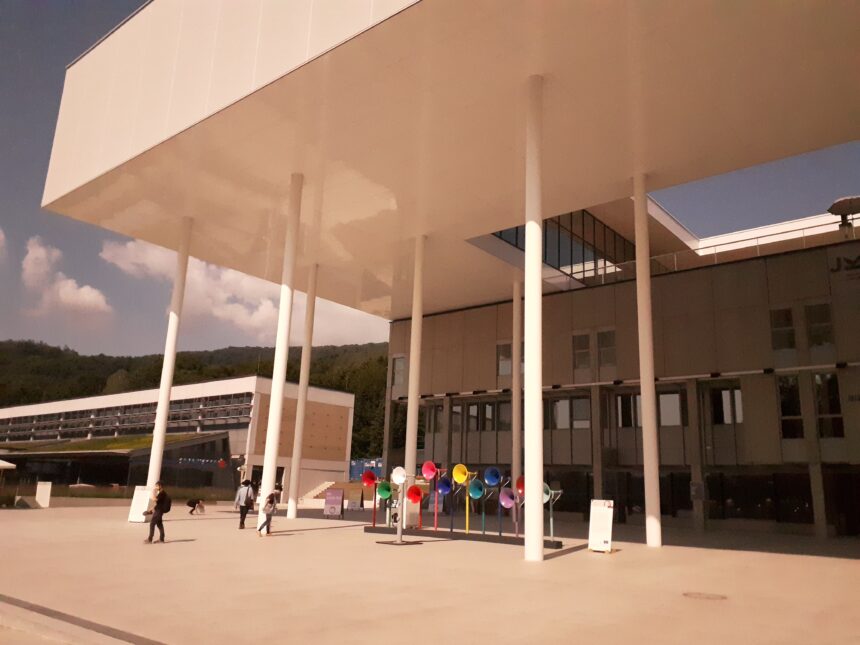
Amongst them, I happened to accompany as a side-observer the process of implementing and staging one of them: Enacting Innovation, a participatory performance by Judith Igelsböck & Friedrich Kirschner together with Sarah Buser, Tomás Montes Massa, Mónica Rikić, Leoni Voegelin, and Laura Zoelzer. This was an interesting collaboration between researchers in the department of Organization at the JKU working on the study of ‘innovation scripts’, and dramaturgs and scenographers of the renowned University of Performing Arts ‘Ernst Busch’ in Berlin, with a vested interest in participatory simulations and theatrical interventions using a wide variety of digital elements, ranging from graphic representation to augmented reality.
The main attempt of the team–as they repeated endlessly in each of the very few stagings of the project throughout the days of the festival as well as in more recent instantiations (Igelsböck & Kirschner, 2021)–was to create a performative play drawing on and expanding Judith Igelsböck’s research on the innovation scripts displayed by Upper Austrian companies, organisations and cultural agents. Her research as an STS scholar had highlighted the insistent repetitiveness in the concepts, spaces, modalities and approaches to innovation. The play wanted to expound on the paradox of the protocolised and formalised attempts at managing creativity and innovation, also displaying an interesting reflexive approach to the very procedures of making the participatory performance.
From its onset, the performance was affected at its core by the festival’s hygiene concept, mandating hydroalcoholic gel cleaning, physical distance, reduced numbers and visits by appointment using a rather strict one-way-only walking route in the interior spaces of the Learning Centre of the university, where all LIT projects were to be shown. As a result, the team had conceived the performance using four distinct stages, each of which needed to be accessed with a steep ladder. All stages were equipped with screens, where different games were to be played by individual participants. Players were drawn to imagine that they were working in a rather abstract corporation dealing with a mostly ‘empty’ signifier: the thing being produced or processed always absent from any consideration and dealt with a panoply of chart flows or metrics, and elusive organisational jargon.
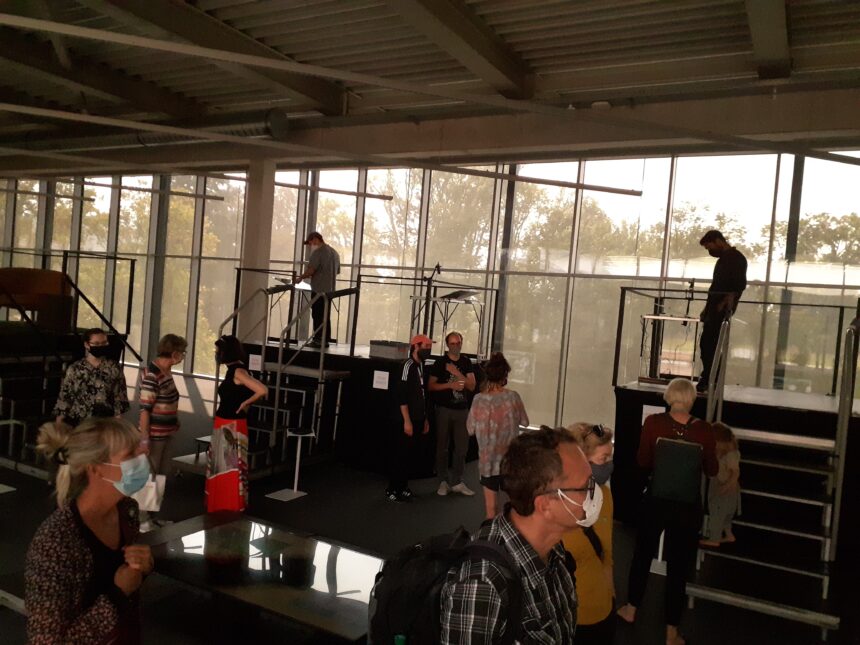
Hence, they were being recruited to take part in different areas (each of them having one station or stage), namely: an organisational management department, having to literally ‘inject’ innovative approaches in the corporation, connecting teams and projects (with a dry graphic interface of cards that needed to be connected to others so that different effects could start happening within the organisation); a human resources department, supervising and recruiting the right teams for the right projects (with a graphic interface showing a pool of standardised individuals running across the screen who displayed specific quantitative characteristics when touched); and a team of visionaries, exploring different innovative scenarios for the company (with a graphic adventure type of interface, in which the player could discover different territories for the company’s projects with the appropriate team).
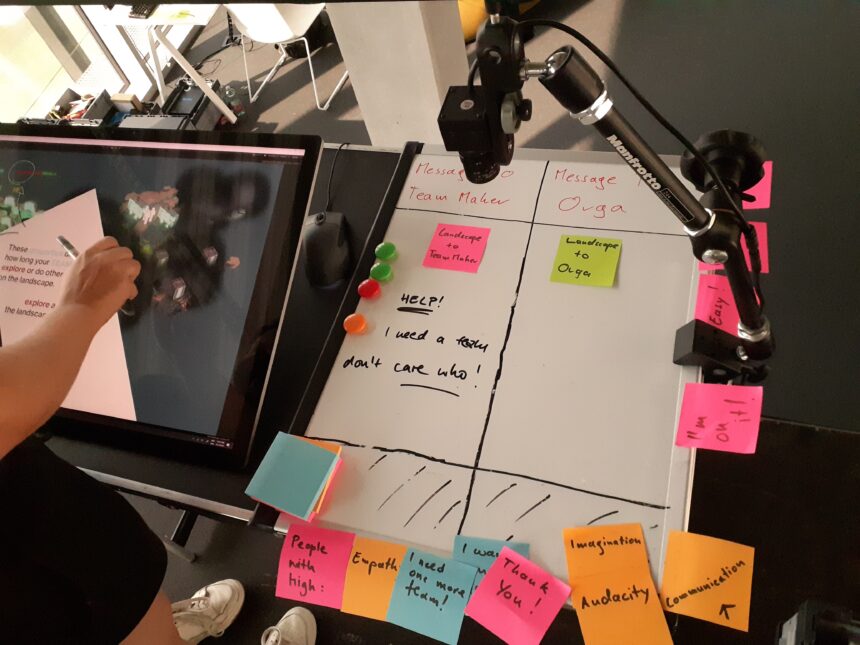
Despite the overall silo effect of the stages–each of them having completely different graphic interfaces and game mechanics–, things were interconnected in at least two senses: (a) implicitly and rather inadvertently by the players, via the complex looping effects the actions in one game could have on another; and (b) explicitly and involving the players, via a cumbersome synchronous camera-based mode of interaction, using a whiteboard with handwritten post-its to request others to take action on their different needs (e.g. requiring a team to continue exploring) so they could continue playing. Besides this, the performance was punctuated by a series of evocative tablet-based interactive audiovisuals. After a given time playing, with or without having achieved the expected results in managing the company’s innovation from the helm of different departments, and before moving to another station, players were drawn into taking one of the tablets and moving around at the bottom of the stages with them.
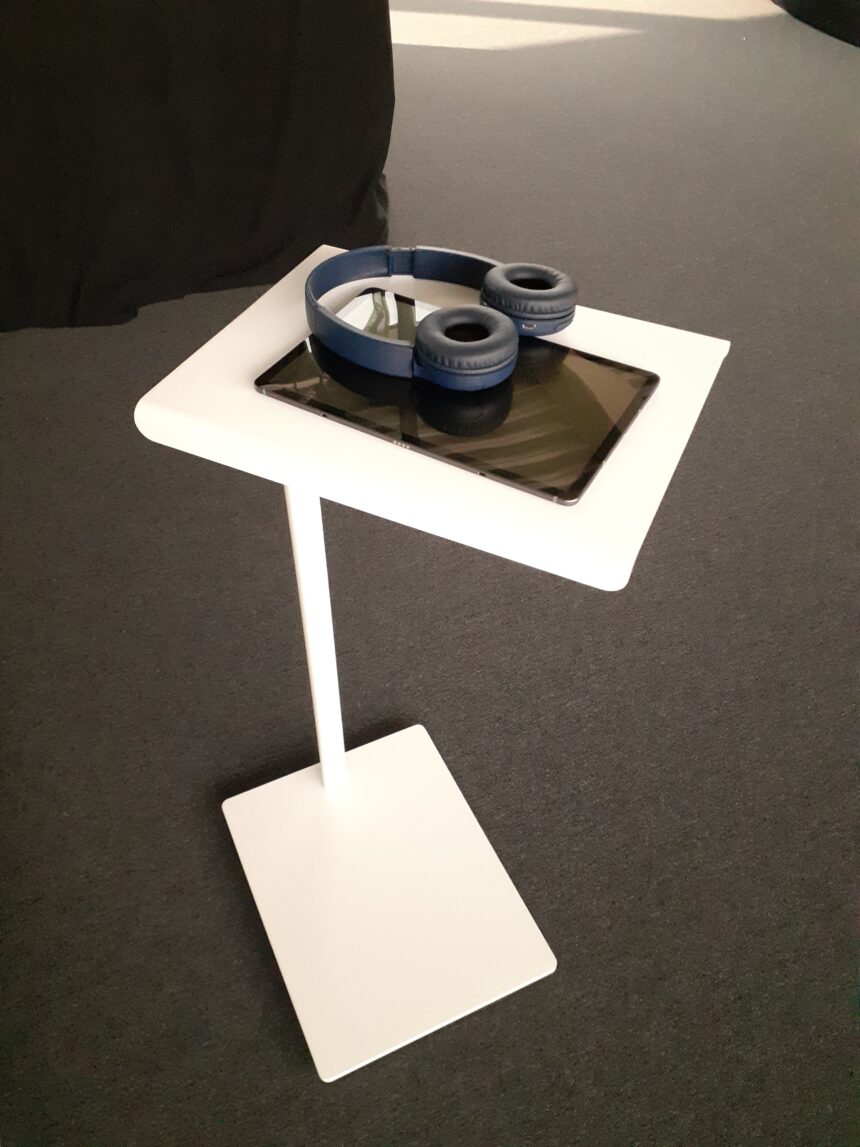
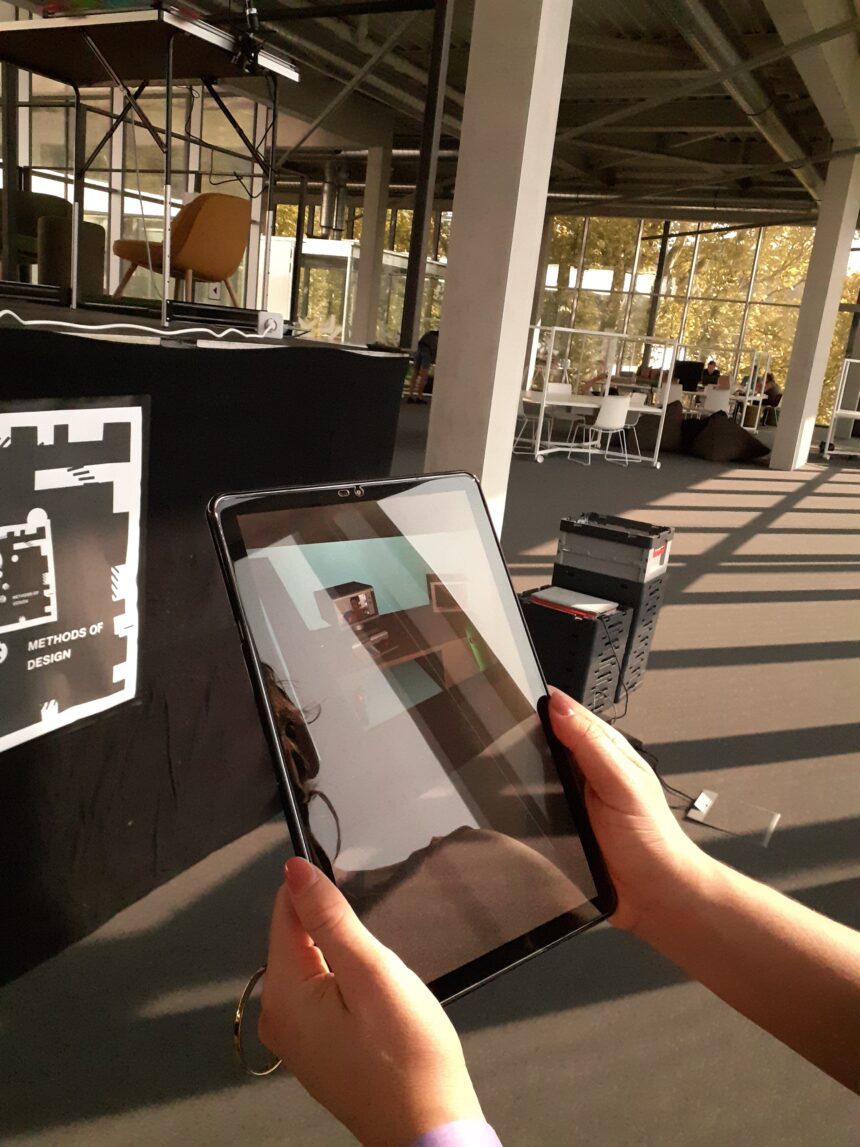
These evocative pieces mostly took the visitors/participants outside of the field of corporate innovation, creating links and showing reflections from the team members on the project itself. Rather than creating artistic means of expression to represent or potentially criticise corporate culture (that is, using interactive theatre to stage innovation scripts), these audiovisuals–ranging from poetic walks by a character on an empty space to gamified introductions of the project or its team members–displayed laterally the team’s reflections on a series of underlying paradoxes they were mired in whilst creating the performance: the fact that they were putting to use very similar methods, tools and practices to the ones being depicted; the predicaments of the artistic quest for salience and newness undertaken with analogously repetitive and isomorphic manners; or the (post)colonial hauntings of a thoroughly international team, pondering who the main audience of the play might be. In doing so, the very project revolved recursively onto itself through displaying in evocative augmented reality pieces the most challenging results of their collaboration.
Interestingly, beyond more conventional approaches to the dramatisation of science and technology, contemporary forms of participatory, community, interactive or digital theatre have also served as relevant arenas for projects searching to activate publics through agonistic and complex encounters with contemporary technoscientific issues (Halfon et al., 2020). Rather than mobilising their consensus or their passive understanding of the wonders and goods of technoscientific developments–creating simple scenographies whereby to appreciate science and technology–, what these rather complex and open-ended projects seek to stage–through immersive and participation-intensive devices–is a wide variety of technoscience dramas. In a very similar vein, in Enacting innovation, although the STS analytic of ‘innovation scripts’ allowed to empirically ground the motives and main references and evocative ideas underlying the game mechanics and its audiovisuals, the project was not conceived as a form of science communication attempting to break down or explain scientific research. The use of artistic means of expression was also not simply a form of outreach of otherwise closed-down research results. What I think this interactive play mostly did was staging the complexity and, with it, the paradoxes of otherwise repetitive innovation scripts, in at least two ways.
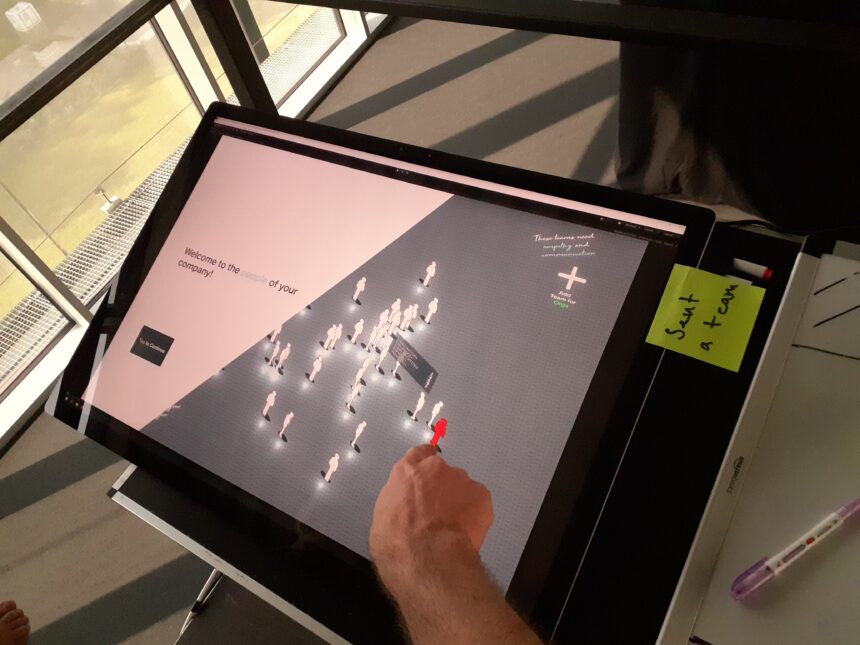
i. Staging the complexity of innovation scripts: In presenting faithfully how innovation managers talk and operate, the play created a fictional scenography eliciting conversations on innovation culture and its challenges in the very terms of the field under study, that is, as a complex system. As many attendees remarked in some of the conversations after the performance ended, the play managed to accurately simulate the liveliness and the emergent issues present in most of these environments. Rather than dumbing down the domain under study, the performance staged complexity in an immersive first-person perspective (see Dumit, 2017 for a similar approach to game design in STS). This allowed for many ‘idiotic’ puzzlements (Horst & Michael, 2011): In the play this was made felt to participants through different graphic interfaces, rules and targets that were impossible to fulfil, having looping effects of all kinds, always leaving the player with a sense of awe at the sheer ungraspability of systems larger than life. For instance, requiring a team to explore innovation of once kind meant requesting the right people from another player, who at the same time had to grapple with the possibilities opened up by yet another player creating the organisational structures for that task.
ii. Staging the complexity of a project on innovation scripts: Rather than the project just being the crystallisation of an interdisciplinary process–something that might be read thinking of the project as having two types of practitioners, STS scholars and dramaturgs, joining forces without going out of their comfort zones–the project opened up a hybrid register. This was reflected and built into–or shall I say inscribed, scripted?–the very play: In describing their aims and debates, or how the puzzlement that the very process of staging innovation scripts backfired into paying attention to the scripted nature of artistic creativity. Doing so, the project pointed to an in between third space, suggesting the use of theatrical means and STS analytic devices to undertake research on how to stage complexity and its potential effects: That is, where staging complexity could be turned into a way not just of representing but of undertaking research on the problems of the day, as a relevant arena of further explorations on different contemporary predicaments.
I reckon that as a stance, programme or strategy ‘staging complexity’ is, by no means, devoid of problems or challenges. After all, attending several of the cycles of play, and taking part in two full cycles myself, I could clearly see how many players–myself included–ended up feeling like the run-down characters of the Lemmings video game. Perhaps some of this had to do with the participatory constraints of the digital technical features of the project (heavily impacted by the physical distancing and the Corona ‘hygiene concept’ of the event), and the zoomed out lock-in feeling they sometimes create. But I think the team made a great effort in working out these constraints to convey many layers of meaning, also searching to impact on the participants so they could appreciate the sheer unfathomable nature of the loops involved.
Witnessing the passionate reactions of innovation managers, cultural practitioners, electronic artists or regular Linz bystanders (perhaps with an educated gaze after 40 years of a renown world festival for the digital arts taking place in their own backyard), I was reminded of a scene of the TV series Halt and catch fire, featuring the ups and downs of the 1980s innovators that produced the digital world as we know it today. In that scene, the character playing the Steve Jobs type of tech guru at some point tries to convince hardware engineers and programmers to think beyond a too technical mindset, observing the changing social dynamics that informatics might afford, by saying “computers are not the thing, they are the thing leading us to the thing.” In a similar way, beyond or even because of its cumbersome technicalities Enacting innovation beautifully managed not simply to convey research results through a dramaturgical form of digital outreach, but to open up a space to enjoy the complexity of innovation as it was staged: hence making it graspable, or at least enabling, by means of gamified loops and virtual reality interfaces, a multiplicity of puzzled conversations on the culture of innovation and the predicaments of its repetitive repertoires.
References
Aït-Touati, F. & Latour, B. (2018). Performing Gaia. Theater, 48(2), 95–101.
Burke, K. (1969). A Grammar of Motives. Berkeley: California University Press.
Dumit, J. (2017). Game Design as STS Research. Engaging Science, Technology, and Society, 3, 603-612.
Goffman, E. (1956). The Presentation of Self in Everyday Life. Edinburgh: University of Edinburgh.
Guggenheim, M., Kräftner, B., & Kröll, J. (2018). Incubations: Inventing Preventive Assemblages. In N. Marres, M. Guggenheim, & A. Wilkie (Eds.), Inventing the Social (pp. 65–93). Manchester: Mattering Press.
Halfon, S. E., Olson, C., Kilkelly, A., & Lehr, J. L. (2020). Engaging Theatre, Activating Publics: Theory and Practice of a Performance on Darwin. Engaging Science, Technology, and Society, 6, 255–282.
Horst, M., & Michael, M. (2011). On the Shoulders of Idiots: Re-thinking Science Communication as “Event.” Science as Culture, 20(3), 283–306.
Igelsböck, J. and Kirschner, F. (2021). Playing with Innovation Scripts in Enacting Innovation. Presentation at the Playing with Method workshop, HU Berlin, URL: https://vimeo.com/515178566 (Accessed February 24, 2021).
Pinch, T. (2010). The Invisible Technologies of Goffman’s Sociology: From the Merry-Go-Round to the Internet. Technology and Culture, 51(2), 409–424.
Rosental, C. (2014). Toward a Sociology of Public Demonstrations. Sociological Theory, 31(4), 343–365.
Shapin, S. & S. Schaffer. (1985). Leviathan and the Air-Pump: Hobbes, Boyle, and the Experimental Life. Princeton: Princeton University Press.
Notes
[1] See https://www.ici-berlin.org/events/frederique-ait-touati/ or http://modesofexistence.org/make-it-work-theatre-des-negociations/ (Accessed December 28, 2020).

